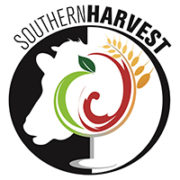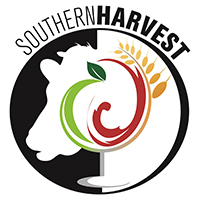Merran Laver is a local freelance writer and editor and has been helping us understand why local food resilience is important. This month Merran looks more closely at what is happening right now in our region to secure our local food resilience.
In considering local food resilience in our own region, I thought it would be useful to look more closely at recent initiatives and report on their progress.
The two Australian Capital Region Food Hub events held in the ACT last year brought together a large number of people from the regional food community. One of the key areas of focus that came out of the Food Hub events is the development of a regional brand that incorporates the ACT into the Southern Harvest region. This will enable both producers and consumers to supply and access regional food. The new executive committee (of predominantly producers) are developing a brand that can be used across the region, and according to local producer Penny Kothe1, this is ‘quite a big project’.
Another key progression to come out of the Food Hub events is the establishment of the Southern Harvest Farmers Market in Bungendore, launched in January 2015 and now a regular twice monthly event. Penny pointed out that the Bungendore Farmers Markets are the first true regional farmers market in the region. Out-of-region agents cannot sell food at the market, and effectively all food that is sold has to be produced within the region.
Penny said: ‘What I’d really like to see is clear labelling about where the produce is from; such as a yellow label if it comes from within region, and another colour if it’s not. There are some things we don’t have (like coffee, sugar) and those ingredients can only make up a small component of what’s sold, and we’re never going to have bananas or pineapples or things like that produced here.’
The market is growing in attracting local producers, who are already offering a diversity of fresh and high quality food products, and as Penny emphasised: ‘The important thing about the market is that it’s effectively being done as a prototype that will be documented back to Southern Harvest in order that it can be replicated across the region.’
Melinda Corey2, Health Officer of Palerang Council, has witnessed the growth of the Bungendore Farmers Markets, observing that ‘there are many more producers than I ever thought there were in this area’. She recently gave a food safety presentation for Southern Harvest and there were over 50 people in the room. Melinda describes the Farmers Market as having ‘brought things to a head’ in terms of local producers coming together to sell their food.
Melinda said: ‘The absolute biggest way that we support food businesses is through provision of information – free of charge – about how to comply with legislation, labelling requirements, food standards code; information about regulatory compliance.’
There have been changes to requirements for home businesses, so people are now able to run small food businesses from their domestic kitchens. This applies to Palerang Council, but the Southern Harvest region covers more than one Council area, and regulations differ for every Council area, so Melinda was very careful at the presentation that any planning advice provided was Palerang-specific.
For someone in the Palerang area wanting to start a home-based food business, their first point of call would be to contact Melinda at the Council, who deals with these issues. Generally it would start with an informal discussion over the phone, then people are able to book a meeting and go in for a rundown of what they want to do. Producers in other Council areas need to consult their own Council for advice.2
Another potential initiative that could be developed in our region is the use of box schemes as a way of selling food to consumers. Box schemes are a way for producers to sell food – for example, a box of mixed vegetables or meat, for a set price – that is delivered to, or collected by, the buyer. Penny said: ‘A couple of limitations on the producer’s side is that either you’ve got to be able to make up that box, providing diversity, from your own farm for at least 10 customers – and that’s a lot of produce every week – or you need a system where you can aggregate different suppliers, and we don’t really have the facilities at the moment.’ She said the Conservation Council is looking at whether the system can be made workable for regional producers. There could be demand to set up a joint facility that provides cold storage, perhaps a commercial kitchen – an actual hub that producers could use to store and deliver food, probably in an industrial area near Queanbeyan. ‘That would enable aggregated delivery, to restaurants or individuals.’ 1
From the collaboration involved in the Australian Capital Region Food Hubs – eg Southern Harvest Association, Regional Development Australia Southern Inland, SCPA South East Producers, Canberra City Farm, Urban Agriculture Australia, SEE-Change and ‘anyone who was around and interested in food security’ 1 – the Conservation Council is putting together an ACT region food policy and plan and has invited comments on their Discussion paper. This feedback will help frame the food plan, with more research. ‘I know they’re looking at working with existing groups rather than reinventing the wheel, so integrating what came out of the food hub into that and extending research – that’s probably the current next step,’ said Penny.
Merran Laver is a freelance writer / editor with an interest in food, nutrition and health.
References
1 Penny Kothe is a ‘passionate local food representative’, who produces and sells food and is deeply involved in the local and regional food economy.
2 Melinda Corey, Health and Building Inspector at Palerang Council, Bungendore.
READ MERRAN’S OTHER ARTICLES SHE HAS WRITTEN FOR SOUTHERN HARVEST:


Leave A Comment